History
History
Human Services Campus | Phoenix, AZ
In November of 2005, the Human Services Campus began providing services to persons experiencing homelessness. Over five years of planning and development were spent in the design and implementation of the Campus. It also marked the beginning of a new approach to ending homelessness based upon collaboration, reducing service barriers, and providing a comprehensive, holistic array of services while addressing the root causes of homelessness.
Ancestral Lands
We acknowledge that the Human Services Campus is on the ancestral lands of those American Indian tribes that have inhabited this land for centuries, including the Akimel O’odham (Pima) and Pee Posh (Maricopa) peoples. We pay respect to Indigenous elder – past, present and future – who have stewarded this land through the generations.
Before the Campus
Since the late 1980s, there had been a de facto “campus” in downtown Phoenix created by the loss of hundreds of affordable housing units, urban redevelopment, and economic slowdown, which resulted in hundreds of homeless people residing in downtown Phoenix. In response to this crisis, numerous providers began providing services in the area, including St. Vincent de Paul, Andre House, St. Joseph the Worker, Central Arizona Shelter Services, and Maricopa County Health Care for the Homeless.
For over 20 years, these partners provided thousands of meals, nights of shelter, medical care, job services, legal services, and case management to the estimated 1,000 or more homeless individuals that lived in “the Zone” (the area between the Harrison St. Rail Road tracks to Van Buren and from 7th Avenue to 15th Avenue). These provider agencies provided services in old, over-taxed converted industrial buildings. Limited shelter capacity resulted in hundreds of homeless individuals sleeping and moving through neighborhood streets to access the various services. This high concentration of individuals on the street attracted drug dealers and other criminal predators who preyed upon the vulnerable homeless population. This limited solution to end homelessness and the challenges it created began to change in 2000.

Change Begins
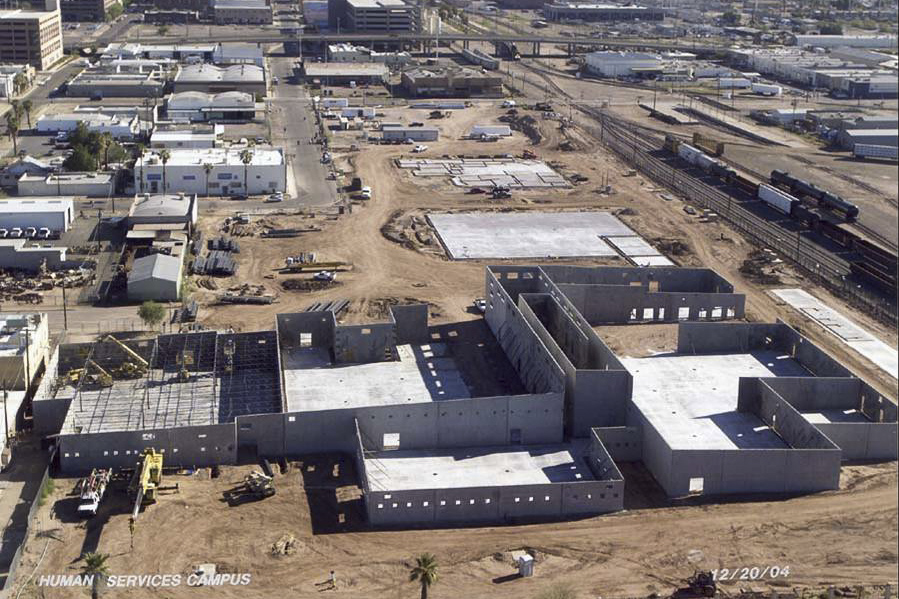
By 2000, this situation was untenable. The agencies’ over-taxed facilities were exceeding their limited capacity. At the same time, plans were being developed within the public and private sectors to redevelop the Capitol Mall area that included “the Zone.” Early planning acknowledged the need to address the homeless population and services in the area. Initial discussions and proposals suggested developing new facilities for the agencies away from downtown. In response, the core partners collaboratively authored a letter not only explaining the need to maintain services in the downtown area but more importantly, they expressed their willingness to develop a collaborative new approach to improve services while reducing the impact on the community. The unprecedented commitment to collaboration among partners ultimately convinced business and governmental leaders of the soundness of this plan and the need to proceed. Led by Maricopa County and strong support from the local business community, work began on the funding and development of the Campus.
Organization
While the partners worked with the County and community partners to raise the capital for the project, the agencies (St. Vincent de Paul, Central Arizona Shelter Services, St. Joseph the Worker, and Maricopa County Health Care for the Homeless) began forming the collaboration that the Campus would rely upon. NOVA Safe Haven was also added to assist in providing services for the mentally ill. Ultimately, a new limited liability partnership was formed, the Human Services Campus, LLC. Each of the original organizations served as members and/or managers of the entity.
Growth and Success/Lodestar Day Resource Center
In developing the Campus concept, the backbone of the Campus services was to be provided by the original member/manager agencies. In the planning process, one new facility was added, a Day Resource Center. This facility would serve as a one-stop drop-in center and house many of the additional collaborative resources offered by the Campus, including employment services, education, and training facilities, mental health and substance abuse provider partners, and other programmatic support. The Lodestar Day Resource Center was originally created as a program of the Human Services Campus, LLC. The Day Resource Center concept was piloted for a year prior to the Campus opening. It immediately demonstrated the need for this service serving hundreds of individuals and demonstrating the effectiveness of the co-location and coordination.
With support from the Lodestar Foundation, the pilot program relocated to their Campus facility with the rest of the partners in 2005. In these new facilities, the Lodestar Day Resource Center (LDRC) provided unprecedented levels of service for individuals experiencing homelessness. Ultimately, the growth and programmatic needs of the LDRC justified the establishment of the LDRC as its own independent nonprofit. Like the Lodestar Day Resource Center, all of the Campus partners experienced increased demand for service as the Campus engaged and served the needs of a previously underserved population. Through the Human Services Campus, LLC, the partners developed new policies and procedures to manage and ensure the safety of clients engaging the Campus. Collaborative outreach teams from the Campus partnered with local City of Phoenix Police Neighborhood Enforcement Teams to improve the local neighborhood.
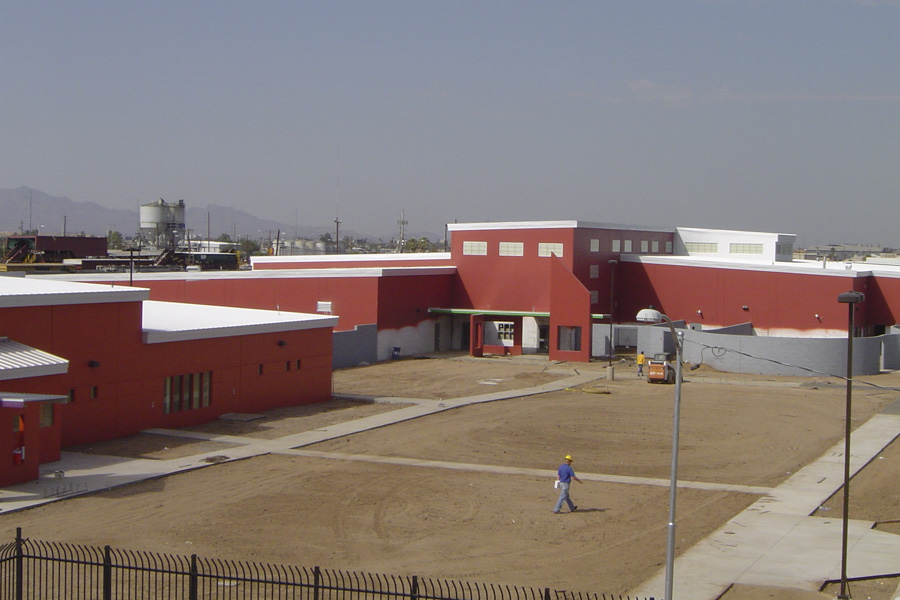
In response to unmet shelter needs that resulted in over 30 heat-related deaths in 2005, the Campus worked with CASS, United Methodist Outreach Ministries (UMOM), the City of Phoenix, Maricopa County and the State of Arizona to open the first year-round low demand shelters for men, women and families. This combined with regional water drives, resulted in a dramatic decrease in heat deaths in subsequent years and has provided thousands of additional nights of shelter. The HSC, LLC was also able to secure commitments to establish an endowment to support the operations of the Campus. In its first five years, the HSC demonstrated the effectiveness, need, and success of the Campus collaboration.
Moving to the Future
In 2009, the HEARTH Act was passed by Congress and signed into law. The HEARTH Act refocused federal homeless funding and strategies to “end homelessness”. These strategies focused on evidence-based strategies including Housing First and a focus on identifying the chronically homeless, people with serious mental illness and physical disabilities, or substance abuse issues who utilize inordinate amounts of services and incur significant costs in the crisis system. The HEARTH Act also encouraged the development of collaborative systems improvements including a coordinated entry system to better engage, prioritize, and connect homeless individuals to appropriate housing and services to end their homelessness.
In 2011, the Human Services Campus began efforts to re-align the Campus and its services around these new evidence-based models. There were three key elements of this new strategic focus: 1) with input from its Campus partners, a unified program model was developed to align services into a single programmatic system committed to a consistent approach to engage, assess and connect homeless individuals to services and housing as fast as possible; 2) creation of a new Single Point of Entry and intake facility at the Brian Garcia Welcome Center, to house the new entry process for the Campus; and 3) development of a new governance structure to better coordinate Campus service coordination and delivery, create financial stability and ensure the Campus provides a safe, dignified and well-organized facility. The recent history of the Campus reflects the implementation of these strategies.
Service Coordination
In 2011, the HSC partnered with Arizona Housing, Inc. (AHI) to fill 135 permanent supportive housing units operated by AHI for chronically homeless individuals. Thus was born the Homeless Eligibility, Assessment, and Referral Tool (HEART) project. With Campus support and funding and technical assistance from Valley of the Sun United Way, a team of over 15 agencies collaborated to develop a process for identifying, prioritizing, navigating, and housing chronically homeless individuals on the Campus. The group worked together for over a year and ultimately housed over 300 chronically homeless individuals. More importantly, the project demonstrated a number of successful and critical collaboration and coordination strategies, including:
- Adoption of a standardized assessment tool and prioritization process
- Standardized training on assessment tool and collaborative practices
- Use of a prioritized-by-name list for identification and coordination of services
- Case conferencing to coordinate services and share resources
- A fifteen agency open data share for client service coordination
- Development of shared process and procedure documents
- Interagency housing placement and service coordination
- Integration with the regional behavioral health authority and other institutional partners
From the work piloted in HEART, the Human Services Campus became the official regional single adult coordinated entry agency for Maricopa County. This work signified major changes in Campus services as well. Since opening, the LDRC had created numerous programs and engagement opportunities for clients. These programs demonstrated success in improving client motivation and self-esteem while providing dignified, client-centric services.
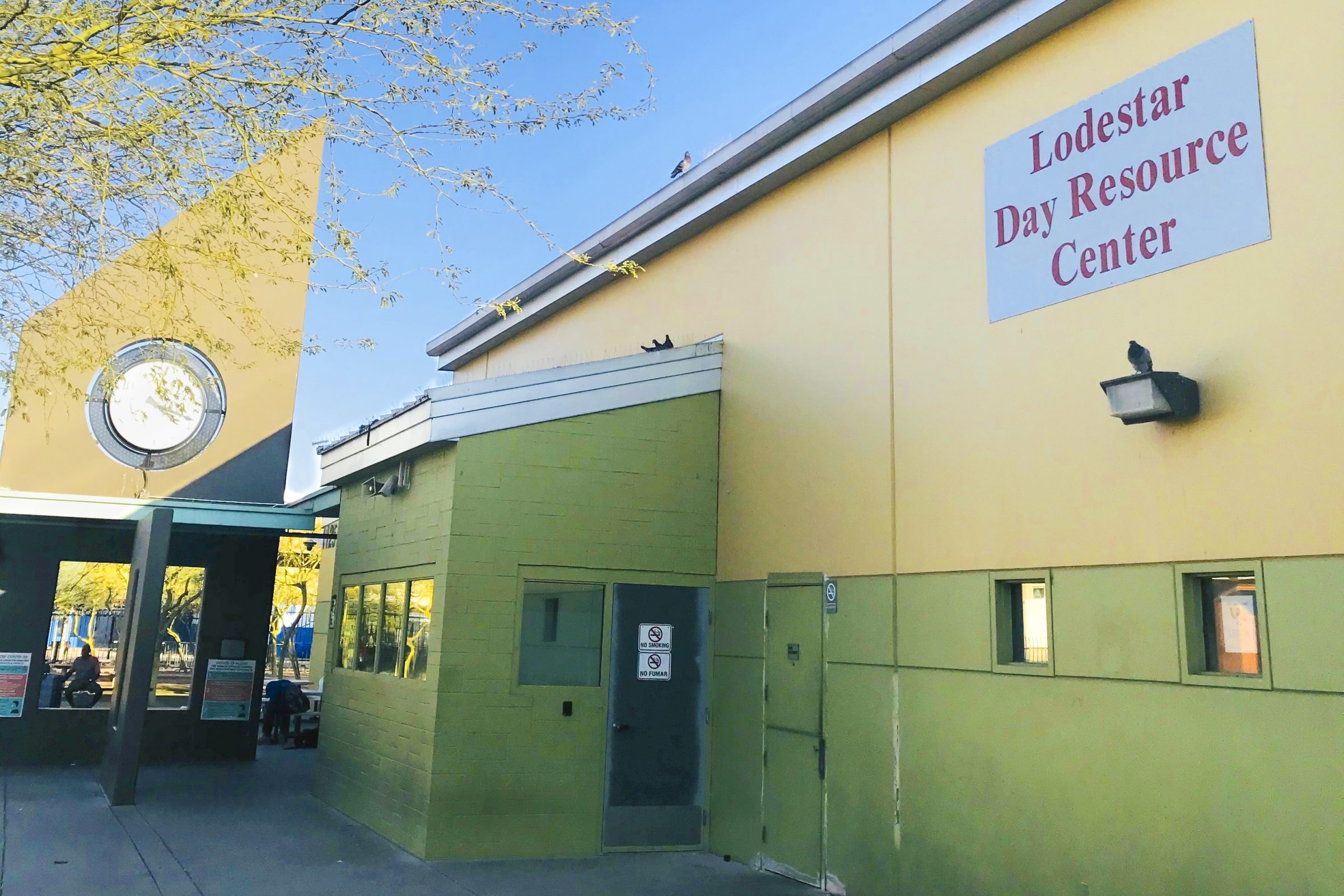
In 2013, after significant re-alignment of resources, the LDRC and HSC opened the pilot of the Coordinated Entry program. Combining evidence-based practices of coordinated entry, diversion (reuniting with family and friends), a regionally adopted standardized assessment tool, housing prioritization, and shared information with the history of the LDRC of dignified, humane, and client-centric culture, this became the new coordinated approach to Campus services. Since November of 2013, over 40,000 individuals have been engaged, received Campus IDs, assessed, and connected to Campus services, including permanent housing. The data collected by the Welcome Center has been shared with funders and collaborative partners to assist in larger projects, including efforts to close the single overflow shelter and engage street homelessness populations around the Campus.
As regional administrators, the HSC/LDRC secured HUD funding and are continually currently working with all their partners to expand coordinated entry practices developed in the Welcome Center regionally across Maricopa County. The LDRC also re-aligned its other programs around providing evidence-based client-centric programs. Within the LDRC, employment, mental health, peer outreach, and housing match services are provided. All of these programs are aligned around standardized practices to engage, assess, and connect homeless individuals to housing and appropriate services to permanently end their homelessness in the shortest time possible.
Brian Garcia Welcome Center
Programmatic re-alignment and service coordination taking place on the Campus necessitated physical changes as well. When the Campus was originally developed, there was no single service intake site on the Campus. For years, each morning, the front gate would be opened, and over 1,000 homeless individuals a day would enter the Campus and self-navigate the vast array of services and programs available on the Campus. With the piloting of Coordinated Entry in 2013, the old Health Care for the Homeless facility on the corner of 12th Avenue and Madison was converted into a single point of entry facility. All clients entering the Campus passed through a single contact point. Returning clients would be provided with a Campus ID for ongoing access, and all new clients would engage in the coordinated entry process described above, including diversion (reuniting with family and friends), assessment, triage, orientation, and service referrals.
Beginning in 2012, strategies were already in place to provide a facility for this service coordination and program alignment. With funding support from the Garcia Family Foundation, the Maricopa County IDA, and Thunderbird Charities, work began to build the Brian Garcia Welcome Center. Early efforts to identify and secure an appropriate site caused some project delays, and the project was completed in February of 2017 and officially opened in March 2017. The Brian Garcia Welcome Center embodies the programmatic alignment of the new Campus model going forward, combining dignified client-centric services and facilities with effective evidence-based service practices to assist individuals in ending their homelessness in the most timely and effective manner possible. The HSC Post Office and non-profit partner Homeless ID Project are located in the Welcome Center. Obtaining proper identification and having access to a street address for employment, medical benefits, and SSI are critical initial services needed to end one’s homelessness.
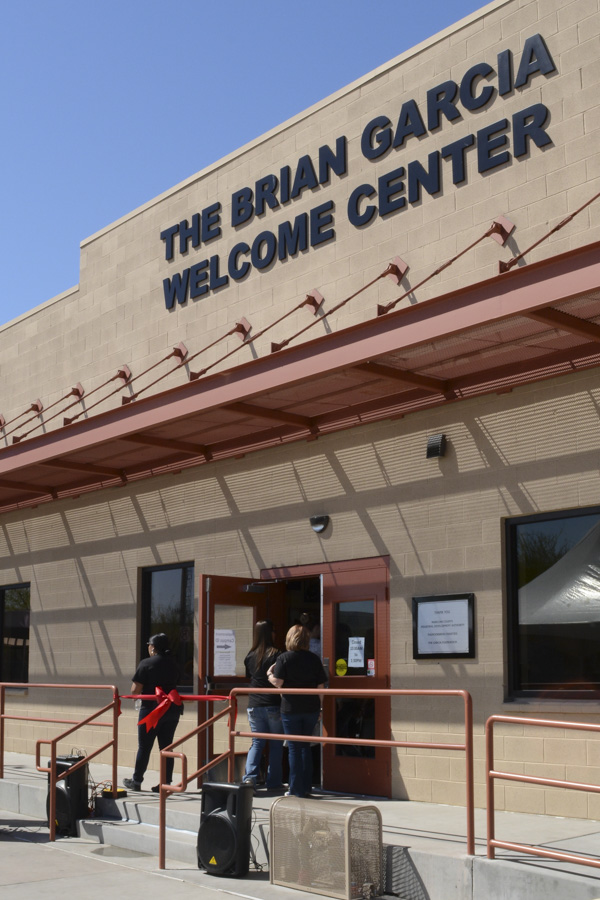
Governance
The Human Services Campus governance was originally vested in a limited liability company consisting of the founding Campus agencies and providers. While this structure initially allowed inter-agency cooperation and coordination of essential operations, it became clear that the structure posed significant deficiencies and prevented the Campus from fulfilling its intended goals and potential. In 2010, a team from the Thunderbird School of Management assessed the Campus and its governance structure and recommended the replacement of the existing LLC structure with a new Human Services Campus Board of Directors to govern the Campus.
With the initial approval of the existing LLC members and managers, work began to create this new Board of Directors. The Human Services Campus, Inc. was originally charted in 2012 with thirteen initial members including representatives from the original partner agencies, funders, business leaders, and other community stakeholders. An IRS 501c3 non-profit status was secured in 2014.
In March of 2016, the original remaining Campus members, CASS and St. Vincent de Paul transferred their ownership interest in the Campus to the Human Services Campus, Inc. signifying a new unified collaborative identity aligned around an integrated programmatic approach. Since the transfer of governance in March of 2016, the new Board has developed principles of collaboration and service for the Campus, re-aligned security and maintenance services for the Campus, started and completed construction of the Brian Garcia Welcome Center. On October 4th, 2017, Maricopa County transferred ownership of the Campus to the Human Services Campus, Inc.
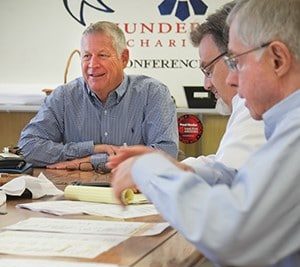
Details of Organizational Structure
Campus of Human Services, LLC (LLC) was formed in 2005, and was originally owned by 5 Arizona non-profit organizations. As of April 1, 2016, all ownership interest in the LLC was transferred to Human Services Campus, Inc. (INC). Furthermore, for fiscal years 2017, 2018 and 2019, the INC had a controlling financial interest in Lodestar Day Resource Center, Inc. (LDRC), which can be seen as the program arm of the organization for these years. During fiscal year 2019, the Board of Directors of INC decided to transfer all program activities and operations of LDRC to the INC. We are currently reviewing/transferring the remaining assets, liabilities, contracts, etc., from LDRC to INC. All financial statements from 2019 forward are consolidated under INC. The Lodestar Day Resource Center building continues to be a hub for multiple, critical client services on the Campus utilized by nearly 400 clients per day.
Ending Homelessness

The Human Services Campus continues to meet its mission of ending homelessness through the power of collaboration. Each day over 1,000 homeless men and women have a safe place to meet their basic needs, access services, and secure housing and income necessary to end their homelessness. The Campus and its collaborative partners are on the cutting edge of these efforts in Maricopa County. Utilizing the ongoing collaborative spirit of the Campus partners, empowering existing and new community resources, including affordable housing, will ensure that the Campus realizes the potential and vision that was created over a decade ago to better serve the homeless population and community.



